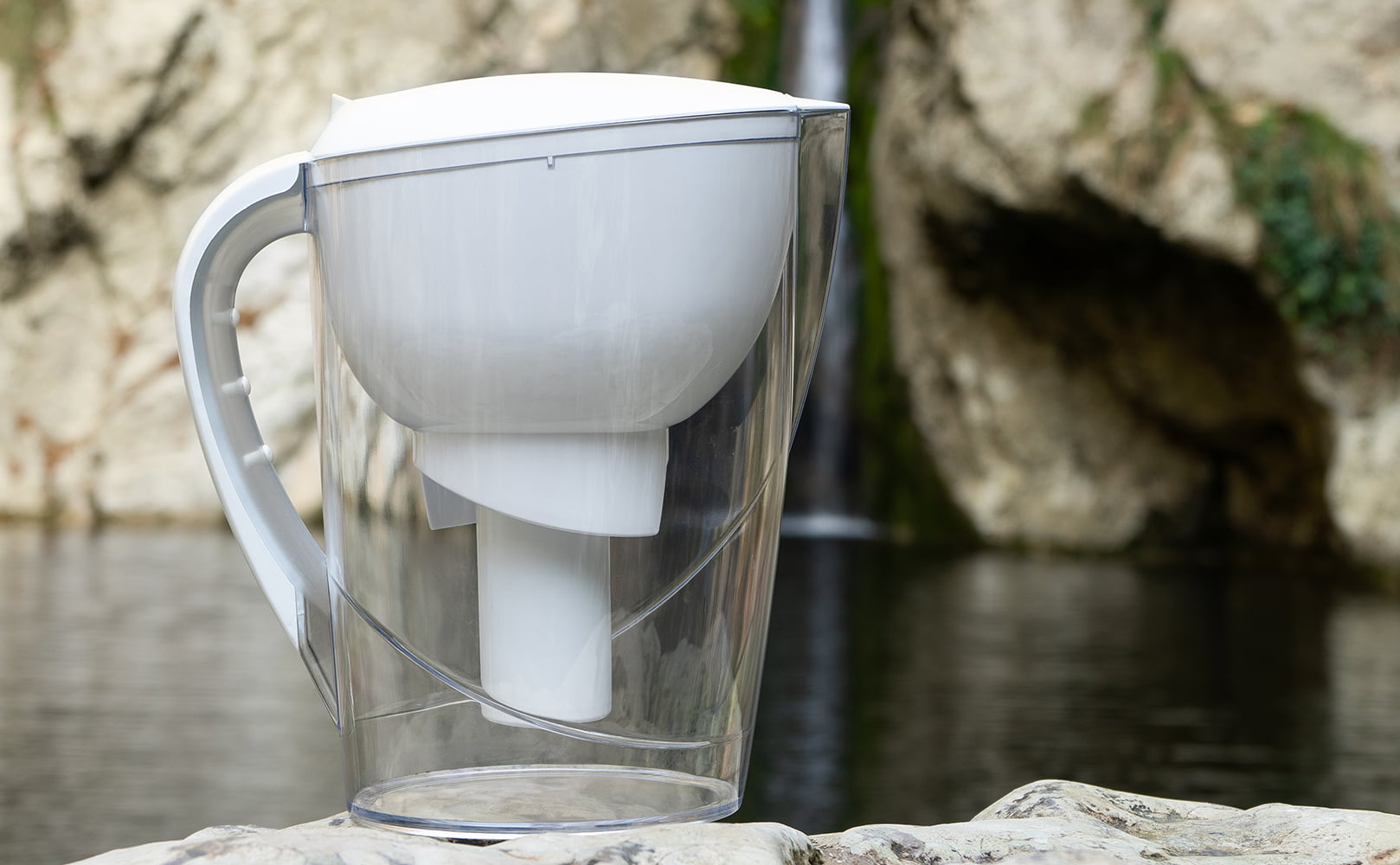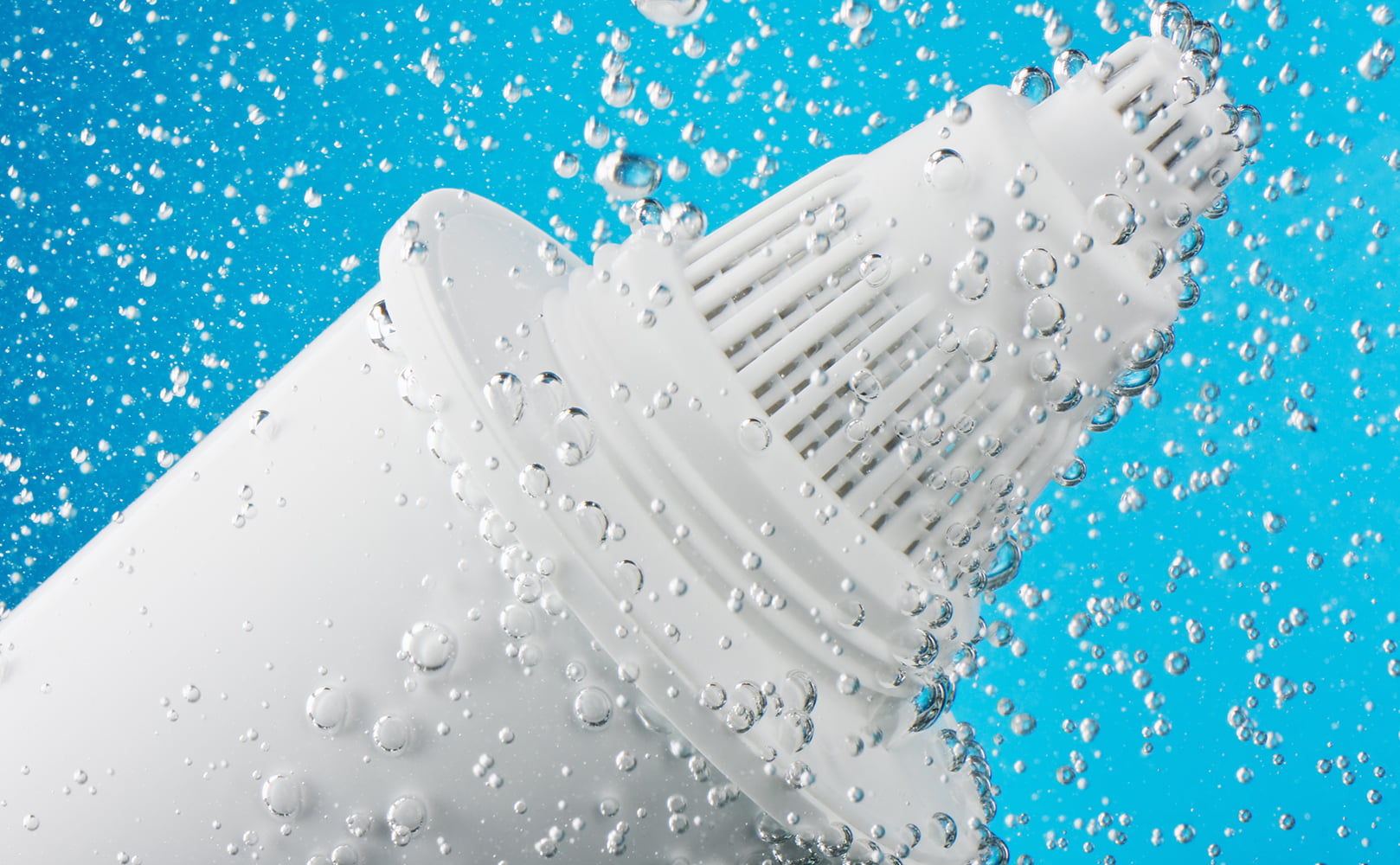Is There a Reverse Osmosis Water Filter Pitcher?
Written by: Gene Fitzgerald // Last Updated: Sep 27, 2022
This page may contain affiliate links. If you buy a product or service through such a link we earn a commission at no extra cost to you. Learn more.
Water filter pitchers are portable, lightweight, and easy to use.
Besides, quality units can remove several contaminants from water, including lead, chromium 6, pesticides, and chlorine.
Still, because reverse osmosis is one of the most effective ways to purify water, people wonder if something like a reverse osmosis water filter pitcher exists.
If you’re in the same boat, read below to find out.
Key Takeaways
- There are no reverse osmosis water filter pitchers.
- RO systems require high water pressure to function, which cannot be achieved in a filter pitcher.
- Also, reverse osmosis produces wastewater which isn’t compatible with water filter pitchers either.
Is There a Reverse Osmosis Water Filter Pitcher?
Reverse osmosis systems provide highly pure and healthy drinking water. As such, homeowners wonder if reverse osmosis water purification works with filter pitchers.
Unfortunately, it doesn’t. There is no such thing as a reverse osmosis water filter pitcher.
RO systems typically purify water very slowly, need high water pressure, and also produce wastewater (more on these topics below).
Therefore, combining RO filtration technology with water filter pitchers simply isn’t doable.
However, it doesn’t indicate that pitchers alone cannot remove the contaminants lurking in your water supply. In fact, a few premium filter pitchers reduce most water pollutants and resolve aesthetic water issues pretty effectively.
Why Reverse Osmosis and Filter Pitchers Don’t Work Together
Reverse Osmosis Requires High Water Pressure
Any RO water purification process requires high water pressure in order to function properly. For this reason alone, a direct connection to a home water supply is needed.
The bare minimum pressure with most RO systems is 40 psi. However, to make the filtration process more efficient, 60 psi works even better.
Pitchers, on the other hand, work based on gravity. Simply put, the only force that pushes a relatively small amount of water through the filter media is one caused by gravity – which certainly isn’t high.
So even if given a try somehow, the process would be highly uneconomical.
What’s more, a reverse osmosis system eliminates more impurities and wastes less water the higher the feed water pressure. Granted, factors like solute concentration, membrane pore size, and feed water temperature also come into play.
Still, RO water treatment using a filter pitcher would be subpar to say the least, and would likely waste 20 or more gallons of water for every gallon purified.
(Note that 20 gallons is only a rough estimate. At 60 psi water pressure, a standard reverse osmosis system wastes around 4 gallons for every clean gallon.)
Speaking of wastewater…
RO Membranes Produce Wastewater
Water molecules diffuse through the semipermeable RO membrane leaving all contaminants behind. However, all water cannot diffuse. Some of it stays on the membrane’s entry side. As the purification process continues, this water collects more and more contaminants.
The water left behind is often referred to as “concentrate” or “brine”. The water that has crossed the membrane is called “permeate”.
Now, the brine water needs to go somewhere. That’s why reverse osmosis systems use a drain line. Essentially, all the wastewater passes down the drain line and into your kitchen sink’s drain.
A water filter pitcher does not have a drain connection, obviously. So where to put the wastewater?
You’d require a drain connection for the pitcher if the brine could be somehow routed out without polluting the purified water.
RO Water Purification Is Slow
Though pretty effective for treating contaminated water, RO systems work incredibly slowly. Thus, such systems include a storage tank to store water for future demand.
Yes, RO systems that come with a water pressure pump do not require a tank. But this would be impossible to realize in a water filter pitcher.
As such, one would need to wait a long time to get filtered water from an RO pitcher.
RO Systems Are More Than a Membrane
A reverse osmosis system features multiple filter stages to ensure broad contaminant removal. So aside from the RO membrane itself, a few commonly used filter stages include sediment pre-filters, granular activated carbon pre-filters, and carbon block post-filters.
It’s hard to imagine where to put all that in a small-sized filter pitcher.
What Contaminants a Water Filter Pitcher Removes
Not all water filter pitchers remove the same contaminants. Basic models only improve the taste and smell of water, while certain powerful units from specific brands can eliminate tons of water pollutants, including:
- Chromium 6
- Lead
- Disinfection byproducts (DBPs)
- Chloramine
- Chlorine
- Mercury
- Pesticides
- Pharmaceuticals
- Volatile organic compounds (VOCs)
- Perfluorinated chemicals
- Fluoride
- Microplastics
- Viruses and bacteria
What Reverse Osmosis Water Purification Removes
Here is what reverse osmosis systems can remove from water:
- Herbicides
- Pesticides
- Sediment
- Disinfection chemicals + their byproducts
- Heavy metals
- Metalloids
- Transition metals
- Nitrates/nitrite
- Salts and minerals
- Microorganisms
- Pharmaceuticals and other chemicals
Please note: The RO membrane alone does not eliminate all the above contaminants. Such broad removal is only possible because RO systems combine several filtration stages.
In fact, RO membranes are rather delicate and prone to damage when getting in contact with certain chemicals like chlorine. As such, these chemicals need to be removed in the pre-filter stages.
RO Systems vs. Filter Pitchers
Both RO systems and filter pitchers have advantages and disadvantages. However, the fitness of both systems can be determined by what you want to remove from your water.
In other words, some contaminants require reverse osmosis for removal, while others might best be eliminated using a pitcher.
Pros and Cons of Water Filter Pitchers
Here are some advantages and disadvantages of using water filter pitchers:
Pros
- They eliminate foul odor and make your water better-tasting.
- Premium pitchers target several types of contaminants. These include arsenic, lead, fluoride, microplastics, chlorine, microorganisms, pesticides, VOCs, and drug residues.
- Filter pitchers won’t cost you a pretty penny unlike most RO systems; they are pretty affordable.
- They are easy to use: Fill up the pitcher, wait for a few minutes, and that’s it! You can access clean drinking water in a matter of minutes.
- Water filtering pitchers are an eco-friendly option compared to bottled water that promotes pollution.
- Pitchers are lightweight and compact.
Cons
- Poorly designed filters may introduce bacteria into your water.
- The filter elements need frequent replacements – every 1-2 months on average. Though the filter itself doesn’t cost much, frequent replacements can start to add up.
- Most filters have small capacities and filter your water slowly.
- Thorough cleaning once or twice a month is a must. You need to disassemble the whole pitcher and clean all the hard-to-reach areas.
Pros and Cons of RO Systems
Advantages and disadvantages of reverse osmosis systems include:
Pros
- A reverse osmosis system greatly improves your water’s smell and taste.
- They are quite easy to DIY-install and maintain.
- They make your water pure to the point that it remains crystal clear even when frozen.
- An RO system can eliminate more stubborn water contaminants like arsenic and chromium 6 that pose health risks on consumption.
Cons
- An RO system doesn’t differentiate between beneficial and harmful compounds. As such, it also eliminates healthy minerals from your water. Reduced mineral intake can cause mineral deficiency.
- Mineral-deprived water can also be acidic, which is another cause of concern according to some experts.
- Reverse osmosis systems are more expensive than other filter types available on the market.
If you have any thoughts about the question, is there a reverse osmosis water pitcher, please don’t hesitate to leave a comment below!
Information provided on BOS is for educational purposes only. The products and services we review may not be right for your individual circumstances.
We adhere to strict editorial guidelines. Rest assured, the opinions expressed have not been provided, reviewed, or otherwise endorsed by our partners – they are unbiased, independent, and the author’s alone. Our licensed experts fact-check all content for accuracy. It is accurate as of the date posted and to the best of our knowledge.




